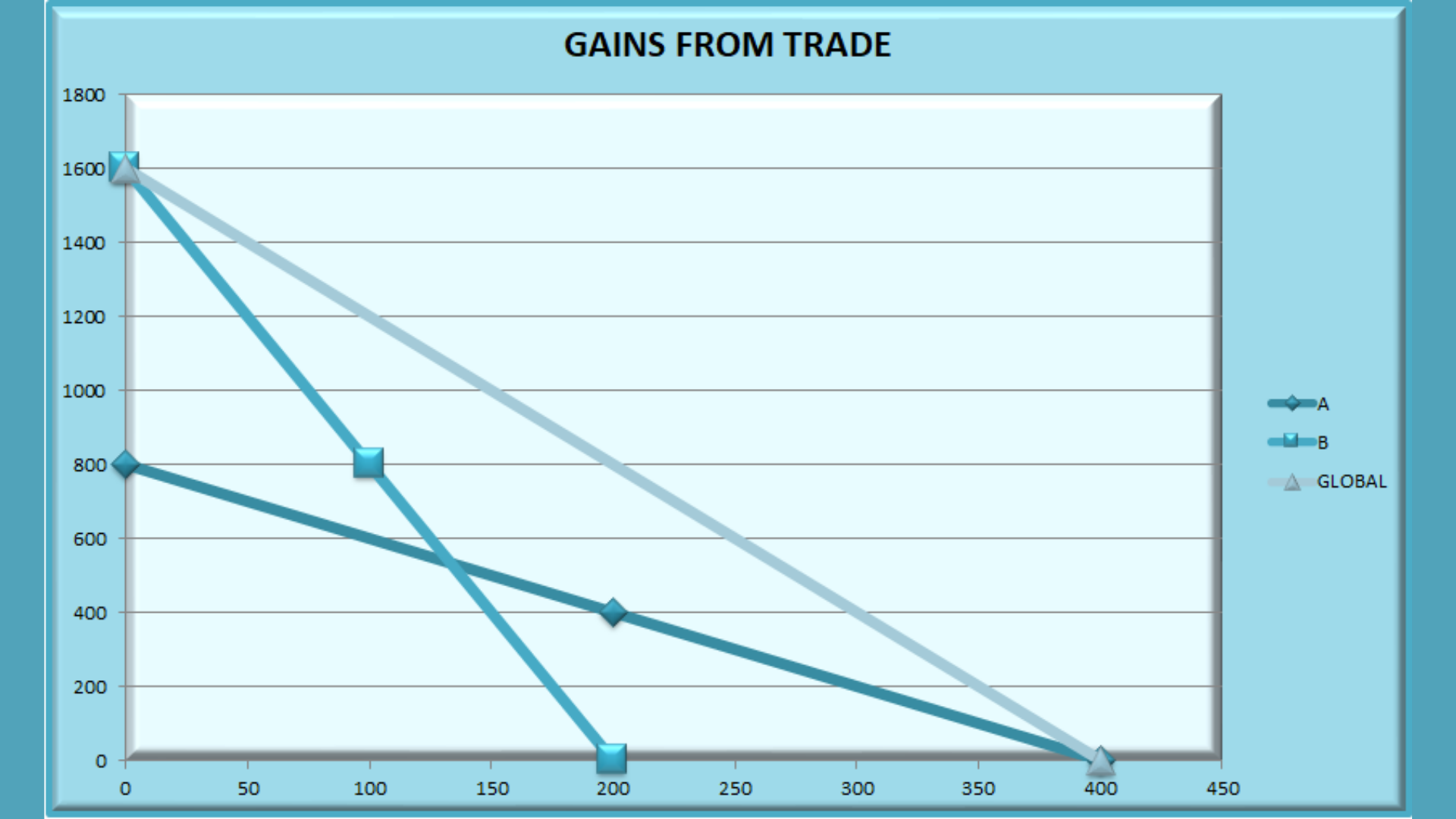a. An absolute advantage exists if the country is able to produce a good at a lower cost or use fewer resources.
b. A comparative advantage exists if the country’s opportunity cost of producing a good is less than its trading partner.
c. The mechanism through which the concept of comparative advantage works, can be explained with the help of the following example:
i. Suppose there are two countries A and B, producing two goods X and Y.
ii. The production structure at the given resource level of the two goods in each of the countries is as follows:
|
|
X |
Y |
|
A |
4 |
8 |
|
B |
2 |
16 |
iii. We can see that country A can produce more of product X and country B can produce more of product Y.
Therefore, countries A and B have an absolute advantage in the production of product X and Y respectively.
iv. This means that to produce one unit of product X country A has to give up producing 2 units of product Y. In other words, for country A the opportunity cost of producing one unit of product X is 2 units of product Y.
v. Similarly, the opportunity cost of the two products for both the countries is:
|
|
X |
Y |
|
A |
2 Y |
1/2 X |
|
B |
8 X |
1/8 Y |
vi. Here we can see that since countries A and B have the lesser opportunity cost of product X and Y respectively, they have a comparative advantage over the overproduction of these products.
vii. In such a situation, if country A can sell one unit of product X for more than two units of product Y, and country B can buy one unit of product X for less than 8 units of product Y, both the countries are at the profit.
viii. So a trade-off of product X within the range of 2-8 units of product Y is a win-win situation for both countries.
d. Consider another example, where one country has the absolute advantage in respect of both the products.
i. Suppose there are two countries A and B, producing two goods X and Y.
ii. The production structure at the given resource level of the two goods in each of the countries is as follows:
|
|
X |
Y |
|
A |
4 |
8 |
|
B |
2 |
6 |
iii. We can see that country A has an absolute advantage in respect of both the goods X and Y, as it can produce more of both of them.
iv. The opportunity cost of the two products for both the countries is:
|
|
X |
Y |
|
A |
2 Y |
1/2 X |
|
B |
3 X |
1/3 Y |
v. Here we can see that since countries A and B have the lesser opportunity cost of product X and Y respectively, they have a comparative advantage over the production of these products.
vi. In such a situation, if country A can sell one unit of product X for more than two units of product Y, and country B can buy one unit of product X for less than 3 units of product Y, both the countries are at the profit.
vii. Thus, it is possible to have a comparative advantage while not having an absolute advantage in producing a good.
e. The greater the difference between the world price of a good and its autarkic price, the more potential to gain from trade.
f. A country’s comparative advantage can change over time.
1.1. Gains from Trade
a. Considering the same example of country A and B producing products X and Y, the autarkic production and consumption of the two countries and the world is:
Country A
|
|
PA |
PA |
|
X |
200 |
200 |
|
Y |
400 |
400 |
Country B
|
|
PA |
PA |
|
X |
100 |
100 |
|
Y |
800 |
800 |
World
|
|
PA |
PA |
|
X |
300 |
300 |
|
Y |
1200 |
1200 |
b. Now if the two countries start making use of the comparative advantage and start producing only the product in which it has a comparative advantage then:
i. Country A can produce 400 units of product X, and
ii. Country B can produce 1600 units of product Y.
iii. This will increase the world production and consumption to 400 units of product X, and 1600 units of product Y.
c. This can be plotted on a graph as follows:

d. Thus we can see that the production possibility frontier (PPF) has shifted outside after opening up trade opportunities. A higher indifference curve can be attained at this level of PPF.